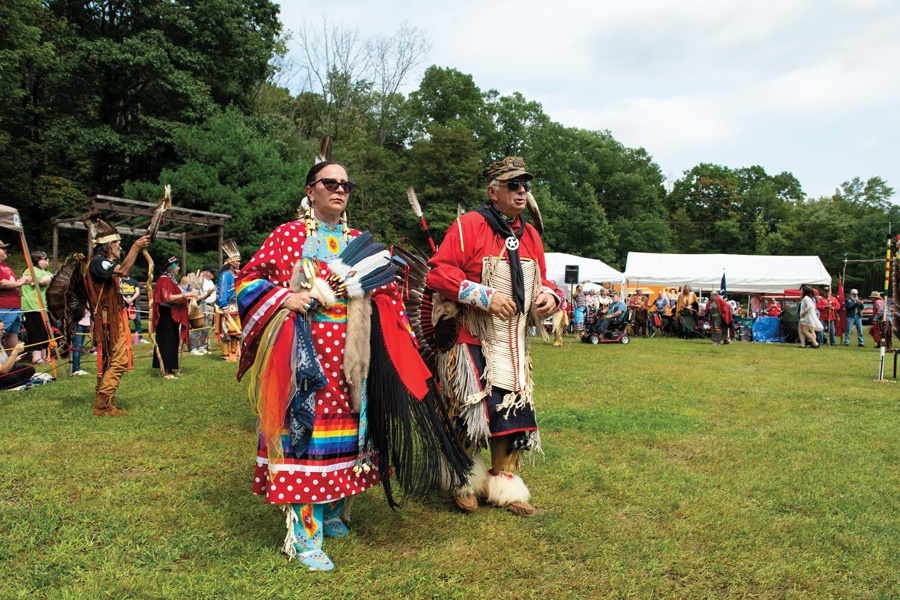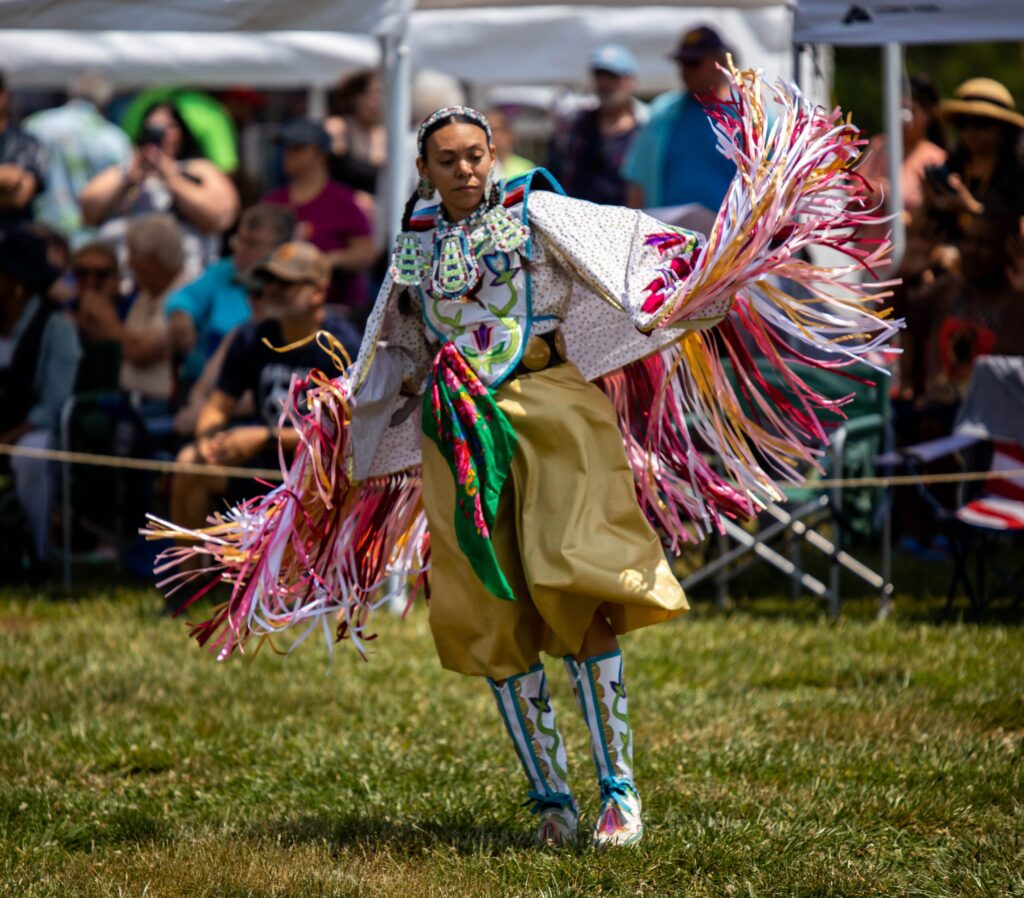
Echoes of Abundance: The Enduring Legacy of Lenni Lenape Harvest Customs
As autumn paints the Eastern Woodlands in hues of crimson and gold, a profound shift in the natural world signals the season of gathering and gratitude. For the Lenni Lenape, the indigenous people whose ancestral lands stretched across what is now New Jersey, eastern Pennsylvania, Delaware, and parts of New York, this period was not merely a practical endeavor but a sacred cycle of life, sustenance, and spiritual connection. Their harvest customs were intricate tapestries woven from agricultural prowess, deep ecological knowledge, communal effort, and profound reverence for the Creator and Mother Earth.
The Lenni Lenape, meaning "Original People" or "True People," were a sophisticated society living in harmony with their environment for millennia. Their relationship with the land was one of reciprocity, a give-and-take that ensured sustained abundance. The harvest was the zenith of this relationship, a culmination of months of careful cultivation, watchful hunting, and diligent foraging. It was a period that underscored their identity, their resilience, and their enduring wisdom.
The Foundation of Sustenance: The Three Sisters and Beyond
At the heart of Lenape agricultural practices lay the ingenious system of "The Three Sisters": corn (maize), beans, and squash. This polyculture system was not just efficient; it was a testament to their advanced understanding of companion planting and ecological synergy. The cornstalks provided natural trellises for the climbing bean vines, which in turn enriched the soil with nitrogen. The broad leaves of the squash plants spread across the ground, shading out weeds, retaining soil moisture, and deterring pests with their prickly stems. This interdependent triumvirate provided a nutritionally complete diet: carbohydrates from corn, protein from beans, and vitamins and minerals from squash.
The cultivation of the Three Sisters was a communal effort, primarily led by women, who held significant societal roles in Lenape matrilineal society. They were the keepers of agricultural knowledge, the stewards of the seeds, and the primary cultivators. The planting of corn, often a sacred act, was accompanied by ceremonies and prayers for a bountiful yield. As one Lenape elder might articulate, "The land is our mother; she feeds us. We must speak to her with respect, and she will answer with abundance."

While the Three Sisters formed the bedrock of their diet, the Lenape’s harvest was far more diverse, reflecting their deep knowledge of the surrounding forests, rivers, and coastal areas. Wild rice (Zizania aquatica) was gathered from wetlands, providing another crucial grain. Various nuts—acorns, walnuts, hickory nuts—were meticulously collected, processed, and stored for winter. Berries like cranberries, blueberries, and huckleberries were harvested in season, dried, or preserved for later use. Medicinal plants, roots, and herbs were also gathered, their properties known through generations of accumulated wisdom. This comprehensive approach to foraging ensured a varied diet and robust health.
The Hunt, The Waters, and Sustainable Practices
Beyond agriculture and foraging, hunting and fishing played vital roles in the Lenape harvest cycle. White-tailed deer were a primary source of protein, hides for clothing and shelter, and bones for tools. The fall was a crucial hunting season, as deer were at their peak physical condition. Hunting was not a sport but a sacred act, undertaken with respect and gratitude for the animal’s sacrifice. Every part of the animal was utilized, embodying a philosophy of zero waste. Similarly, wild turkeys, rabbits, and other small game supplemented their diet.
The rivers and coastal waters provided an equally rich bounty. The Lenape were skilled fishermen, utilizing nets, weirs, and spears to catch migrating fish like shad, salmon, and eels. Shellfish, particularly oysters and clams, were harvested in abundance from estuaries and coastal areas. These aquatic resources were often smoked or dried for preservation, ensuring sustenance through the leaner winter months.
A defining characteristic of Lenape gathering practices was their inherent sustainability. They understood the delicate balance of their ecosystem and practiced resource management long before the term was coined. They only took what was needed, rotated fields, and consciously protected breeding grounds for fish and game. Their practices were guided by a spiritual understanding that they were part of, not separate from, the natural world.
Celebrations of Gratitude: Feasting, Ceremony, and Community
The culmination of the harvest season was marked by profound celebrations of gratitude and community. These weren’t singular events but a series of interconnected ceremonies, feasts, and gatherings that reaffirmed their cultural identity and spiritual beliefs. The Green Corn Ceremony, a tradition shared by many Eastern Woodland tribes, was a central harvest festival. It marked the maturation of the corn crop and was a time for communal thanksgiving, purification, and renewal.
During these celebrations, the longhouses, the traditional communal dwellings of the Lenape, would bustle with activity. Feasts were prepared with the freshest harvest, including succotash (a dish of corn and beans), roasted squash, venison, fish stews, and various berry dishes. Storytelling was a vital component, with elders sharing creation myths, historical narratives, and moral lessons, passing down knowledge and wisdom to younger generations.
Dancing and singing were integral to expressing gratitude to the Creator (Manitou) and to the spirits of the plants and animals that provided life. The Big House Ceremony (Gamwing), a central Lenape spiritual event, though not strictly a harvest festival, often coincided with the autumn and winter months, reinforcing the themes of community, spiritual journey, and connection to the ancestors. It involved a twelve-day ritual of songs, dances, and recounting visions, aiming to renew the spiritual health of the community and the world. Wampum belts, intricately woven shells, were sometimes used in these ceremonies to record agreements, historical events, or to symbolize the sacredness of the occasion.

"Our ceremonies are not just rituals," a contemporary Lenape leader might explain, "they are conversations with the land, with the Creator, and with our ancestors. They remind us of who we are and our responsibilities to all living things."
Spiritual Underpinnings and Enduring Philosophy
Beyond the practicalities of food security, the Lenape harvest customs were imbued with deep spiritual meaning. They believed in a cyclical universe, where life, death, and rebirth were continuous. The harvest represented not just the bounty of the earth but also the generosity of the Creator and the interconnectedness of all beings. Gratitude was not merely an emotion but a way of life, expressed through actions, ceremonies, and a respectful demeanor towards nature.
The Lenape saw the world as alive, with spirits residing in trees, rocks, rivers, and animals. Their harvest practices were therefore acts of reverence, acknowledging these spirits and seeking their continued favor. This holistic worldview fostered a profound sense of stewardship, a responsibility to care for the land not just for their generation, but for the "seven generations" yet to come.
Resilience and Revival: Modern Echoes
The arrival of European colonizers brought immense disruption to Lenape life, leading to devastating population decline, loss of ancestral lands, forced removals, and attempts to suppress their culture. The intricate web of their harvest customs, tied so closely to their land, was severely impacted. Yet, despite centuries of adversity, the Lenape people have demonstrated remarkable resilience.
Today, various Lenape communities, including the Delaware Tribe of Indians, the Delaware Nation, and the Stockbridge-Munsee Community, continue to honor and revive their ancestral traditions. While modern life has changed, the spirit of the harvest endures. Efforts are underway to revitalize traditional agricultural practices, establish community gardens, and teach younger generations about the importance of native plants and sustainable foraging. Language revitalization programs help reconnect people with the ancient words used to describe these customs and the spiritual concepts behind them.
The annual powwows and cultural gatherings often feature traditional foods, dances, and storytelling, serving as vital spaces for cultural transmission and communal celebration. These events are not merely nostalgic; they are vibrant expressions of a living culture, adapted to contemporary realities but rooted in timeless wisdom.
The Lenni Lenape harvest customs offer profound lessons for the modern world. They speak to the critical importance of sustainable living, the power of community, and the spiritual nourishment derived from a respectful relationship with the earth. They remind us that food is not just sustenance for the body, but also for the spirit, binding people to their heritage, their land, and to each other. In a world grappling with environmental crises and disconnection, the echoes of the Lenape harvest continue to resonate, offering a path towards a more harmonious and grateful existence.


